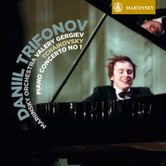In review--Didgeridoo where are you?

Dream Time The Didgeridoo of the Australian Aborigines Arc Music (2010) Want to get your root and sacral chakras open? Listen to didgeridoo, a percussive-wind instrument made from eucalyptus trees hollowed out by termites. More than likely, if you listen to global indigenous, new age, or world music, you have come across didgeridoos. The players mastered circular breathing as they blow into the tubular instrument, often decorated with Australian Aborigines symbols (Dream Time). Face it, this is an instrument with indigenous mysticism attached to it, but it is an almost rare occasion that you hear Aborigines music played on the didgeridoo in context and by performed by Aborigines musicians. Dream Time opens a window to music of the Australian bush. And listeners also get exposed to traditional vocals, percussion, and dance rhythms. So what does this music sound like? The stickman-vocalist pounds out quick rhythms on ...




